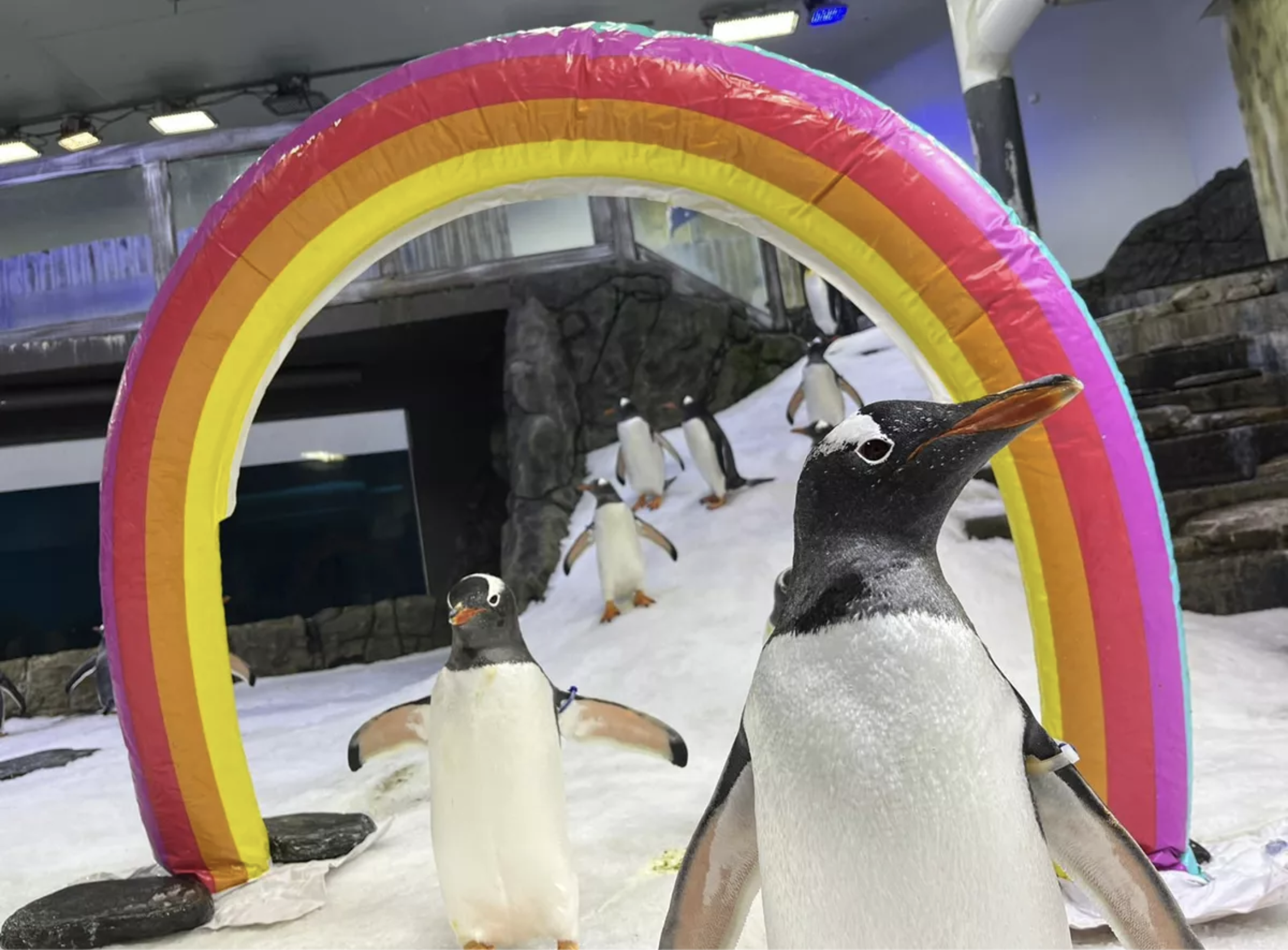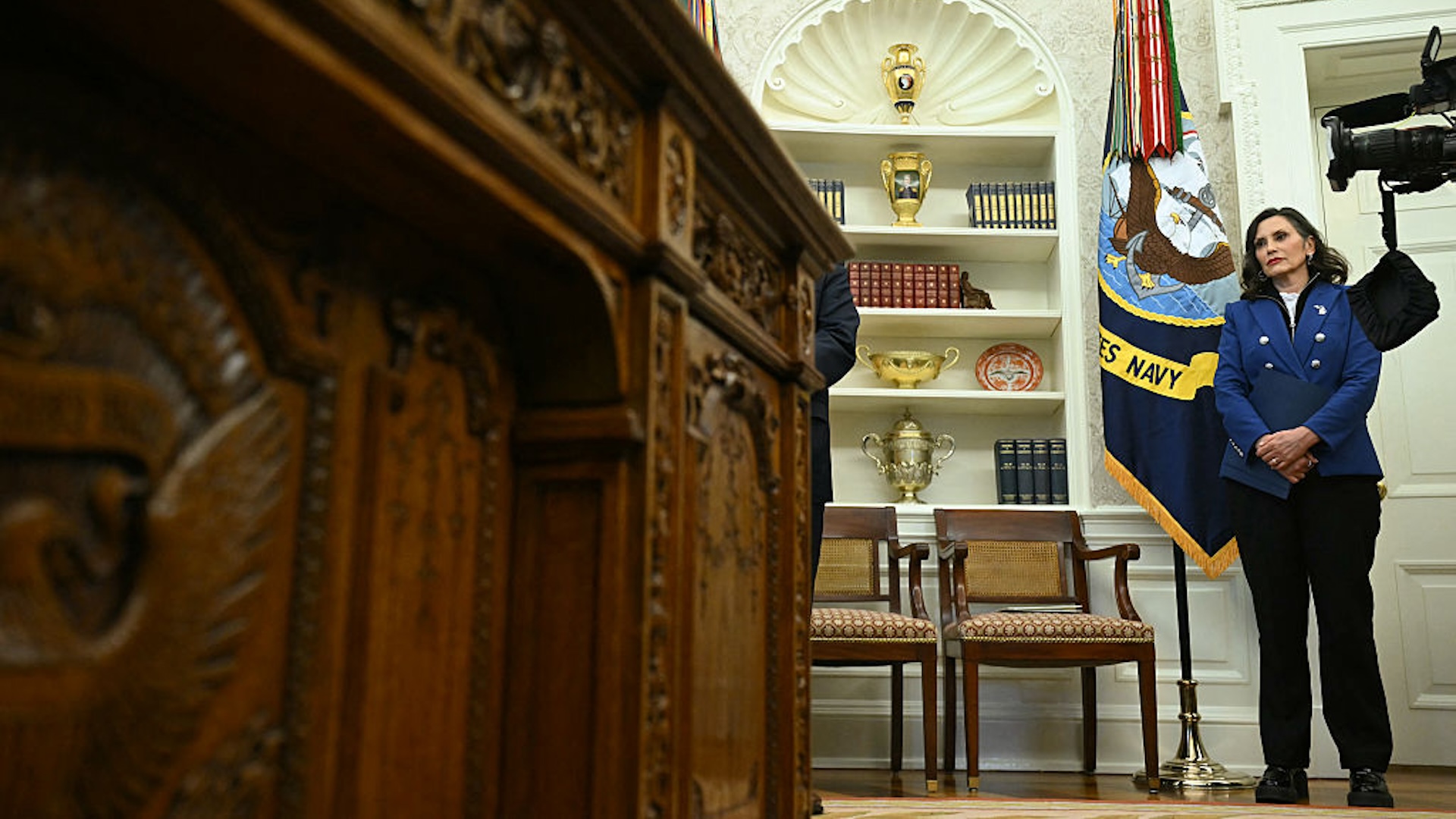After Sphen, the gentoo penguin at the Sea Life Sydney Aquarium, died earlier this month, the zookeepers took the penguin's mate to see his body—to understand why Sphen would not return. The 11-year-old Sphen had reached the natural end of his lifespan, leaving behind 8-year-old Magic, his partner of six years. When Magic saw and understood that Sphen had died, he burst out in song, as Richard Dilly, the general manager at Sea Life Sydney Aquarium, said in a statement. The rest of the penguin colony joined in.
It was a fittingly gay elegy for one-half of one of the the most famous same-sex couples of the 21st-century animal kingdom. Sphen and Magic first became mates in 2018, when the aquarium staff noticed the two penguins waddling and swimming side-by-side in their enclosure. In the following breeding season, they collected pebbles to create a nest together, as gentoo penguins do in their native habitat in the Antarctic and south Atlantic. The aquarium staff offered the duo a dummy egg, and the two penguins took turns incubating it and patrolling the vicinity of their nest to ward off would-be pebble thieves. The penguins quickly compiled the biggest, neatest nest of any penguin pair in the enclosure—a tradition they would uphold each year of their relationship.
Once the bird boys had proved their parenting mettle, Sphen and Magic were gifted a real egg, from another penguin couple that could not take care of both of its own. That egg would hatch into their first chick, first named Sphengic, which is a portmanteau of their names, perhaps in a nod to another treasured queer tradition, and later renamed Lara, in a capitulation to heteronormative naming culture. In 2020, Sphen and Magic would once again become dads to a chick the public named, somewhat bafflingly, Clancy Carpenter. The next year, giant inflatable idols of Sphen, Magic, and their two chicks waved from a float during the Sydney Mardi Gras Parade, replete with rainbow bowties.
From the moment Sphen and Magic built their first nest together, they rocketed to a level of viral, queer recognition that Jonathan Van Ness has toiled for years to achieve. Sea Life Sydney Aquarium often referred to the couple as the world's most famous and loved gentoo penguin couple in the world, which was certainly true but probably a low bar. Earlier this year, Sphen's health began to deteriorate, and aquarium keepers euthanized the penguin to end his suffering.
Like all other queer beings, Sphen and Magic were preceded by a long lineage of same-sex couples. Scientists first recorded same-sex pairs and trios of penguins in the wild more than 60 years ago, and zookeepers around the world subsequently observed the behavior in captive animals. In 2005, the Bremerhaven Zoo in Germany drew criticism from queer advocacy groups for flying in female penguins from Sweden to break up the zoo's three male-male penguin pairs. At the Dingle Oceanworld Aquarium in Kerry, Ireland, the majority of penguins are in same-sex relationships—gay and lesbian.
The most famous of these pairings was Roy and Silo, two chinstrap penguins at the Central Park Zoo. Roy and Silo met in 1998 and engaged in mating rituals, entwining their necks and vocalizing to each other. Then, ready to take their relationship to the next level, the two were seen incubating a rock as if it were an egg. Finally, a keeper offered the penguins a fertile egg, and Roy and Silo doted upon it for 34 days, eventually hatching a female chick named Tango (who would herself pair up with a female named Tazuni). Roy and Silo would eventually separate—Silo partnering with a female named Scrappy and Roy finding companionship with a male named Blue—but their parenting story would be immortalized in And Tango Makes Three, a children's book that is frequently challenged for its suggestion that some parents are gay and also penguins.
I've always found it funny that penguins have always been on the frontiers of queer acceptability. They are far from the most conspicuously gay birds; we cannot forget the "lesbian" seagulls from California that became mascots in the gay pride movement in the 1970s. But penguins are among the least elegant and most endearing of birds—the closest avian evolution came to making a cartoon. They are the opposite of threatening, rendering them wet and waddling vehicles for progressive ideals. (If the famously murderous shoebill stork had a penchant for same-sex relationships, it would surely be denied the children's book treatment.) Perhaps that's why in 2019, the Sea Life London Aquarium announced their same-sex penguin couple, two females named Rocky and Marama, would be raising a genderless chick. "It is completely natural for penguins to develop genderless identities as they grow into mature adults,” the aquarium's general manager Graham McGrath told CNN.
The stories of the gay penguins that go viral always paint a respectable portrait of queer family-building: two male penguins, bereft of an egg of their own, instead sit on a pebble in a simulacrum of parenthood. This framing is undoubtedly aimed at convincing people that queer and other non-traditional families are more than capable of offering a loving, nurturing home to children. This is why And Tango Makes Three has been and continues to be banned or challenged in many places. But gay penguins, like straight ones, obey no laws. Perhaps the queer challenges of our times demand analogies in fresher, more complicated penguin stories. I wish someone would write a children's book about the mated pair of two male penguins at DiernPark Amersfoort in the Netherlands that stole an egg first from a heterosexual pair of penguins, and then later stole an egg from a mated female-female pair. No one wrote a children's book about the gay penguin couple at Odense Zoo in Denmark that stole a chick while its mother was out for a swim and its father had wandered off. You can hardly blame the gay penguins—how else are they supposed to start a family?
Let the record show that the gay penguins of yore were not above such guerilla parenting tactics. And Tango Makes Three leaves out the rumors that Roy and Silo tried to steal eggs from other penguin couples. Even a sequel about Roy and Silo's gay divorce might be a helpful tome for kids whose gay parents are separating. And perhaps it's time to move on from calling the penguins "gay," or even "lesbian." It's clear that many penguins are queer, like many other animals. But it's quite uncommon for animals to exclusively choose same-sex pairings in nature, as the primatologist Frans de Waal told the New York Times in 2005. Instead, de Waal suggested the penguins are better understood as bisexual. So let us draw the curtains on the era of the respectable gay male penguin, and embrace the future: chaotic bisexual penguins doing egg crimes.






